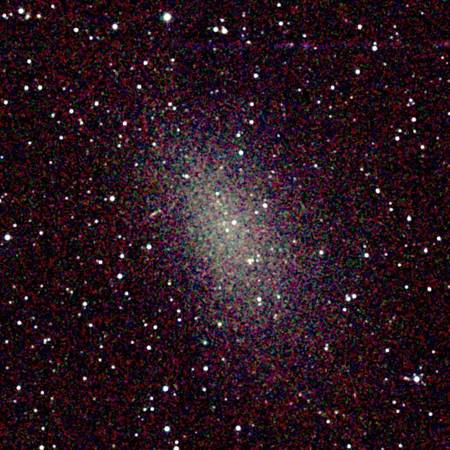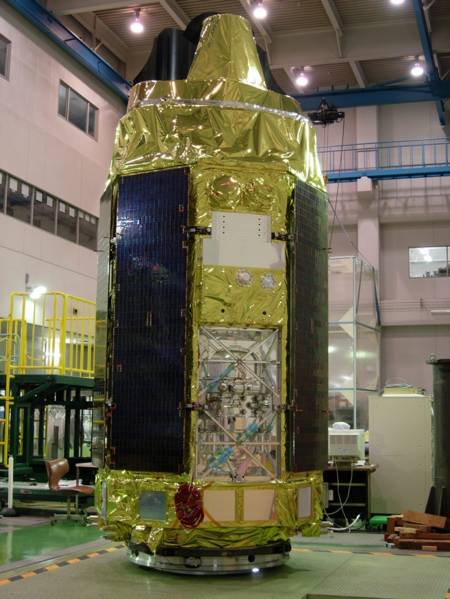Have the Real God Particles Been Found? Part 3 (of 4)
Science works the same way. Often, by eliminating the failed routes we find the pathways to success.
In part 1 of this article series, I described why the Higgs boson is called the “God particle” and why the sterile neutrino appears much more deserving of the title. In part 2, I reviewed astronomers’ efforts over the past twenty years to discover sterile neutrinos and why these searches, to everyone’s surprise, came up empty. I also described how these failures, nevertheless, infused new hope in astronomers that the discovery of sterile neutrinos was at hand. Here, I will tell the story of how that new hope to a significant degree was fulfilled.
Just two hundred yards from our home are a number of mountain trails. However, unlike the streets in our neighborhood, the trails have no signs indicating which paths go through and which dead end. In fact, they have no signs at all. I found the through-trails by painstakingly eliminating the dead ends via trial and error. Science works the same way. Often, by eliminating the failed routes we find the pathways to success.
In part 2, I described a recent research paper by astronomer Dmitry Prokhorov and physicist Joseph Silk1 in which they demonstrate why astronomers failed in their attempts to discover sterile neutrinos. Prokhorov and Silk suggest that failure occurred because astronomers presumed that sterile neutrino decay through the Barbieri-Dolgov mechanism (decay into active neutrinos) would produce a detectable x-ray spectral line. They suggest instead an alternate decay means for discovery of sterile neutrinos.
Already Found?
The most stunning aspect of Silk and Prokhorov’s research paper is their revelation that if indeed the majority of sterile neutrinos arise from Higgs decays or the decay of very light inflatons, like axions, then by two independent means astronomers in all likelihood have already detected sterile neutrinos. The first detection results from comparing the number of observed dwarf galaxies (see figure 1) within 160,000 light-years of the Milky Way Galaxy with the numbers predicted by detailed computer simulations based on a ΛCDM model of the universe2 complemented by varying amounts and kinds of warm dark matter.3 Such comparisons show, in the words of Silk and Prokhorov, that the derived “thermal warm dark matter particle mass has the equivalent effect to the mass of a sterile neutrino of 17.8 keV (kiloelectronvolts), produced from the decay of a very light inflaton.”4

Figure 1: The Dwarf Spheroidal Galaxy NGC 147
At about 2.6 million light-years away, NGC 147 is a satellite galaxy of the Andromeda Galaxy. Dwarf spheroidal galaxies lack bright stars and are dominated by exotic matter. Thus, they make excellent candidates for studying the properties of exotic matter.
Image credit: Two Micron All Sky Survey
Silk and Prokhorov point out that given a sterile neutrino mass of 17.8 keV, the decay of very light inflatons into sterile neutrinos will produce an x-ray spectral line near 8.5 keV. Furthermore, such a spectral line will be most evident not in dwarf galaxies but rather in the center of the Milky Way Galaxy (see figure 2).

Figure 2: The Central Core of Our Milky Way Galaxy
This infrared image was taken by the Spitzer Space Telescope, one of NASA’s four Great Observatories.
Image credit: NASA/JPL-Caltech/S. Stolovy (SSC/Caltech) documentation
As the second possible detection of sterile neutrinos, Prokhorov and Silk refer to x-ray spectrometer observations of the galactic center done on the Suzaka telescopes onboard an orbiting satellite (see figure 3). These observations were analyzed in 2007 by a team of astronomers headed up by Katsuji Koyama.5 This team detected the 8.7 keV spectral line that corresponds to highly ionized iron. Silk and Prokhorov reanalyzed the iron line strength reported by Koyama’s team and found an unexpected excess. They explained it as a result of inflatons decaying into sterile neutrinos with a mass of 17.4 keV per neutrino.

Figure 3: The Suzaka Satellite before Launch
Designed and constructed by the Institute of Space and Astronautical Science of Japan, this satellite houses four different x-ray telescopes along with their spectrometers. It was launched into orbit in 2005 and covers a spectral energy range from 0.2–700 keV.
Image credit: ISAS/JAXA/ASD/NASA/GSFC
Now, the excess in the 8.7 keV spectral line was not high enough to make it a proof positive detection of sterile neutrinos. The excess level was 1.2 ± 0.6 x 10-5 photons per cubic centimeter per second where the 0.6 error is at the 90 percent confidence level (as opposed to the standard convention of a 67 percent confidence level).6 This measurement puts the excess level at about three and a half to four times above the noise. In physics and astronomy detection is not considered firmly established unless the signal measures at least five times above the noise level. Consequently, Silk and Prokhorov’s reanalysis and identification ranks only as a probable, not a positive, detection of sterile neutrinos.
Confirming the Discovery
Prokhorov and Silk firm up their detection of sterile neutrinos, however, by a rigorous demonstration that the measured excess cannot be explained by any reasonable combination of ionization and recombination processes in the iron spectrum. They also offer a relatively straightforward test of their tentative finding. If the measured excess is indeed the result of inflatons decaying into sterile neutrinos, then a narrow band map at the 8.7 keV spectral line should be fairly uniform across the Suzaku telescopes’ fields of view. Such an observational test easily could be achieved within the next few months.
Though Silk and Prokhorov were the first to point out that the excess in the 8.7 keV spectral line detected in the center of the Milky Way Galaxy may be observational evidence for the existence of sterile neutrinos, they were not alone. Two physicists from the Chinese University of Hong Kong, Man Ho Chan and Ming-Chung Chu, drew the same conclusions independently. Their preprint paper has been submitted to the Astrophysical Journal Letters.7
It’s beginning to look like the real “God particles” have been found; and with them, answers to many outstanding anomalies in our best models for cosmic and particle creation. Next week, I will close this article series by explaining the connection between sterile neutrinos and another possible “God particle,” the axion. I will describe where astronomers can quickly collect confirming evidence for both sterile neutrinos and axions, and will conclude with a summary of some of the faith-strengthening theological advances we can expect from these discoveries, both current and emerging.
| Part 1 | Part 2 | Part 3 | Part 4 |
Endnotes
- Dmitry Prokhorov and Joseph Silk, “Can the Excess in the Fe XXVI Lyɣ Line From the Galactic Center Provide Evidence for 17 keV Sterile Neutrinos?” Astrophysical Journal Letters 725, no. 2 (December 20, 2010): L131–L134.
- A ΛCDM model features an inflationary hot big bang universe dominated primarily by dark energy and secondarily by exotic dark matter where most of the exotic dark matter is in a cold state, that is, where the particles making up the exotic dark matter are moving at low velocities relative to the velocity of light.
- Emil Polisensky and Massimo Ricotti, “Constraints on the Dark Matter Particle Mass from the Number of Milky Way Satellites,” (April 9, 2010): arXiv:1004.1459 [astro-ph] (submitted to Physical Review D).
- Prokhorov and Silk: L134.
- Katsuji Koyama et al., “Iron and Nickel Line Diagnostics for the Galactic Center Diffuse Emission,” Publications of the Astronomical Society of Japan 59 (January 2007): 245–55.
- Prokhorov and Silk: L131.
- Man Ho Chan and Ming-Chung Chu, “Observational Evidences for the Existence of 17.4 keV Decaying Degenerate Sterile Neutrinos Near the Galactic Center,” (September 29, 2010): arXiv:1009.5872v1 [astro-ph.HE] (submitted to Astrophysical Journal Letters).






